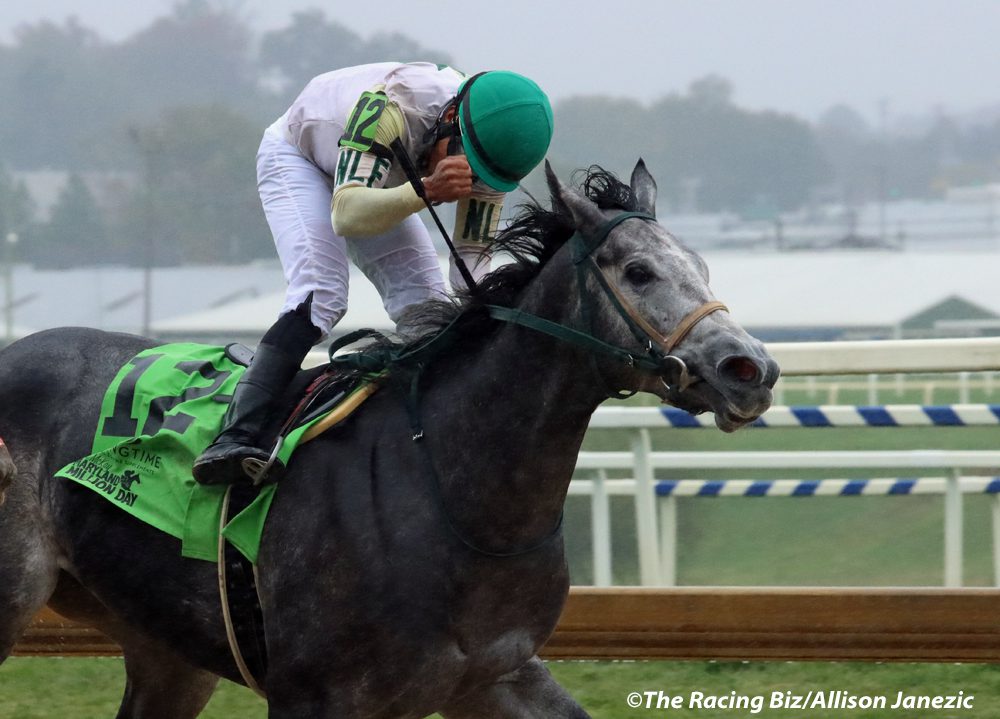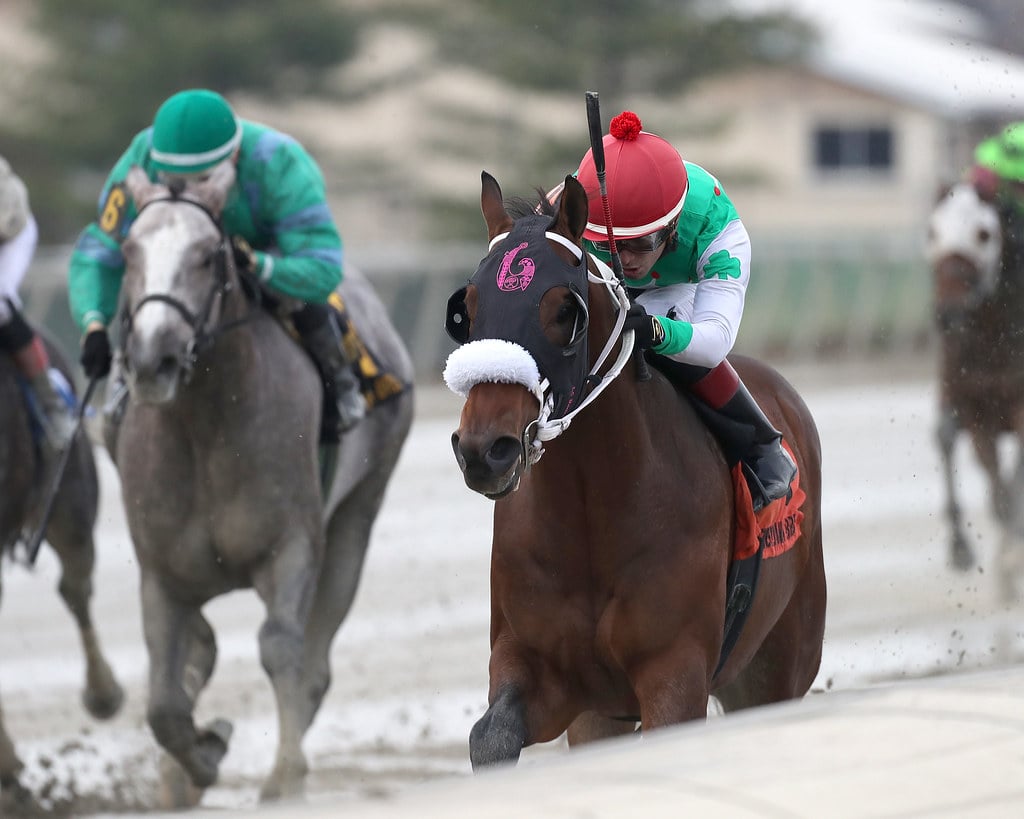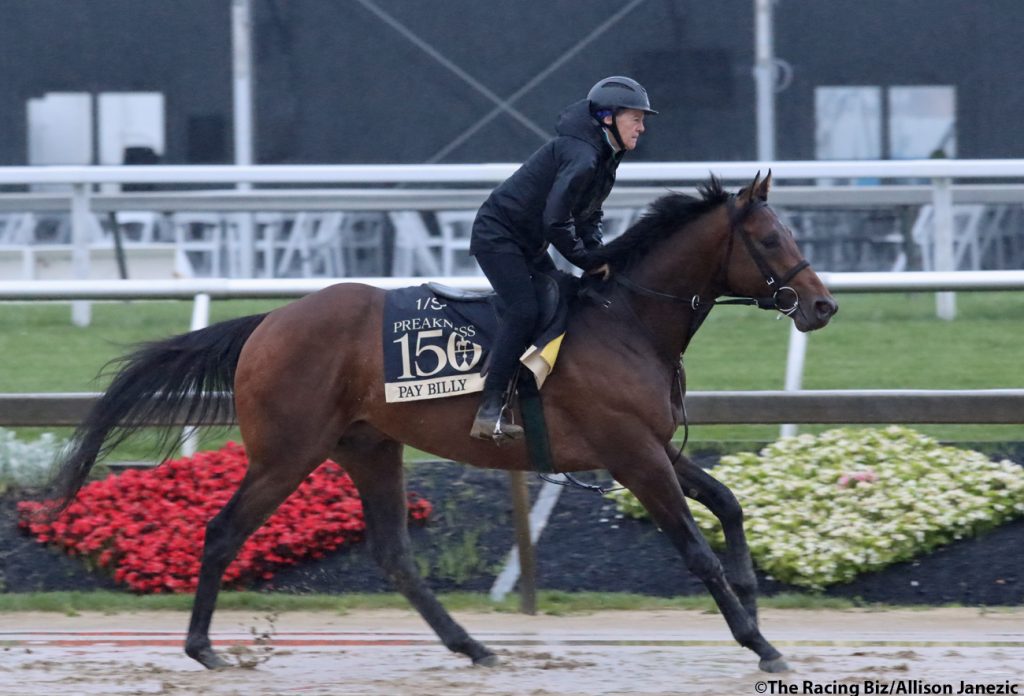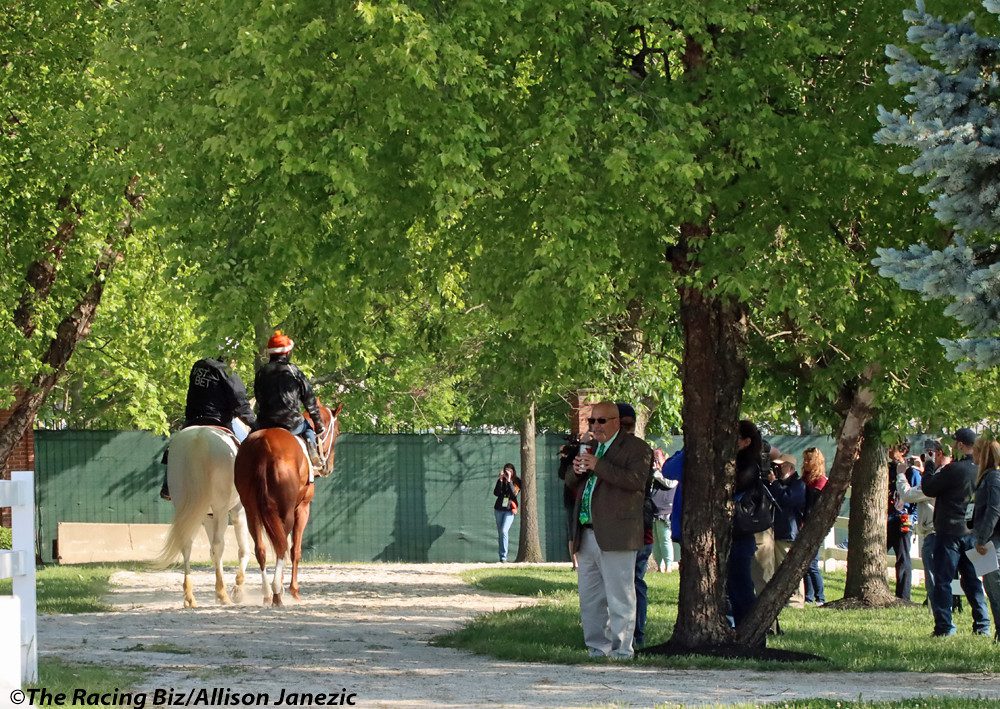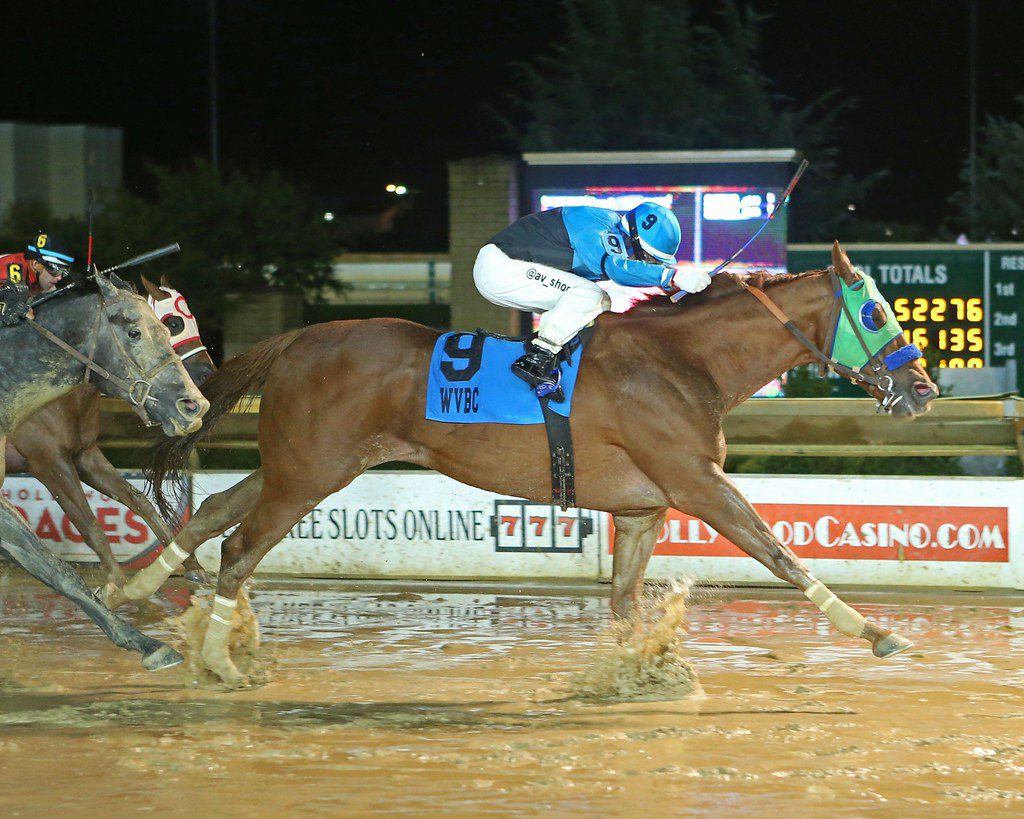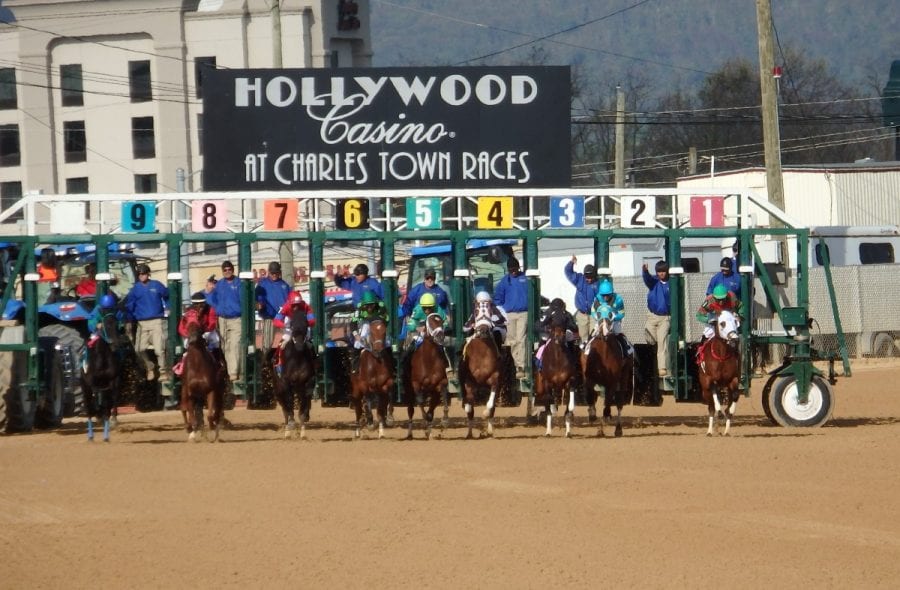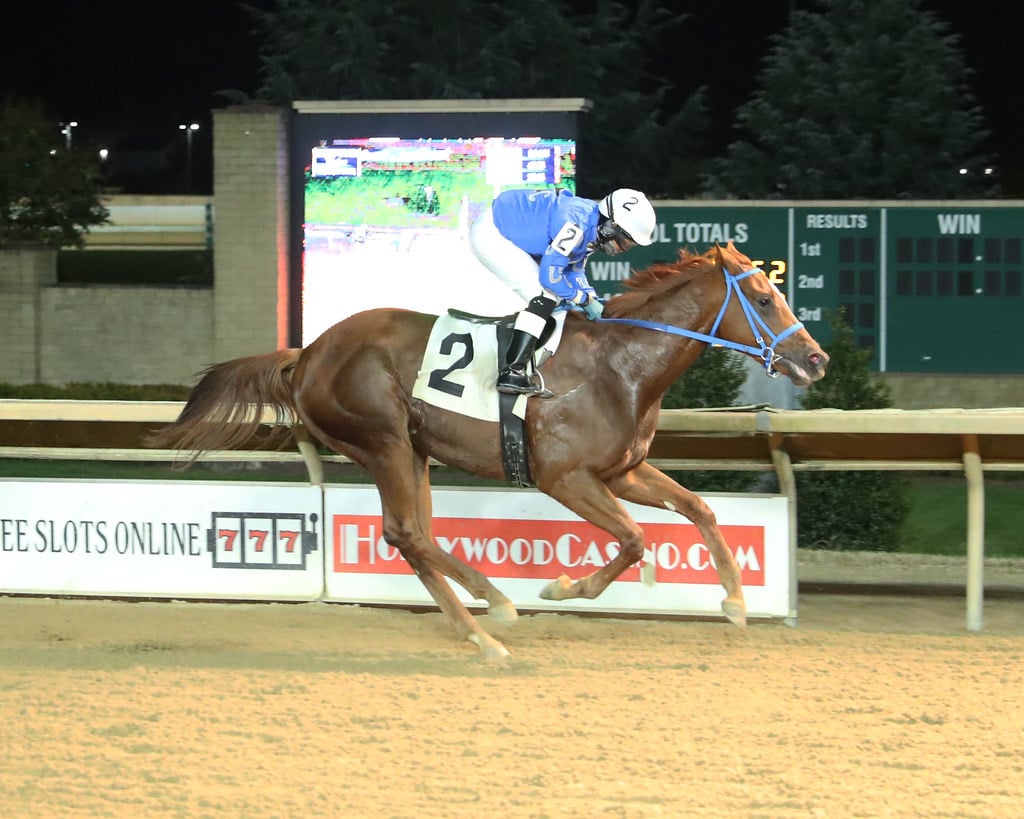Maryland racing stakeholders nervously eye the future
Even the most literal-minded observer couldn’t fail to miss the symbolism of the first race of the Pimlico spring meeting on Friday, May 9. When the starting gate doors failed to open simultaneously, the runners were off to a staggered start, with some getting a head start while others lagged behind.
Welcome to the instability and uncertainty of Maryland racing, where even the most essential stakeholders can’t always figure out how to get out of the gate together and sometimes don’t even seem to be running in the same race.
Approaching the last Preakness Stakes to be run at Pimlico as it currently exists and following decades of ambitious, promising, thwarted, discarded plans, the state’s owners, breeders, and trainers hesitate to look too far ahead, a bad sign in an industry that requires long-term vision for even a hope of success.
“There’s lots of uncertainty,” said trainer Lacey Gaudet, whose family has been training in Maryland for decades and who has been on the board of the Maryland Thoroughbred Horsemen’s Association (MTHA) for three years. “As far as our operation goes, my mother and I said at the end of last year that we’re going to plan in three-month increments. At the end of each of those three-month periods, we’ll decide where we’re going to be.”
Racing campaigns are often plotted months in advance, breeding plans years in advance. Three months is barely the length of one condition book, which not coincidentally is a factor in the instability.
“How in the world do you make a plan when things are being made up as we go?” asked Chris Brown, a small owner and breeder. “How bonuses work can change, purses can drop, racedays can be eliminated. Eventually when the breaking news is usually bad…you have to just give up trying.”
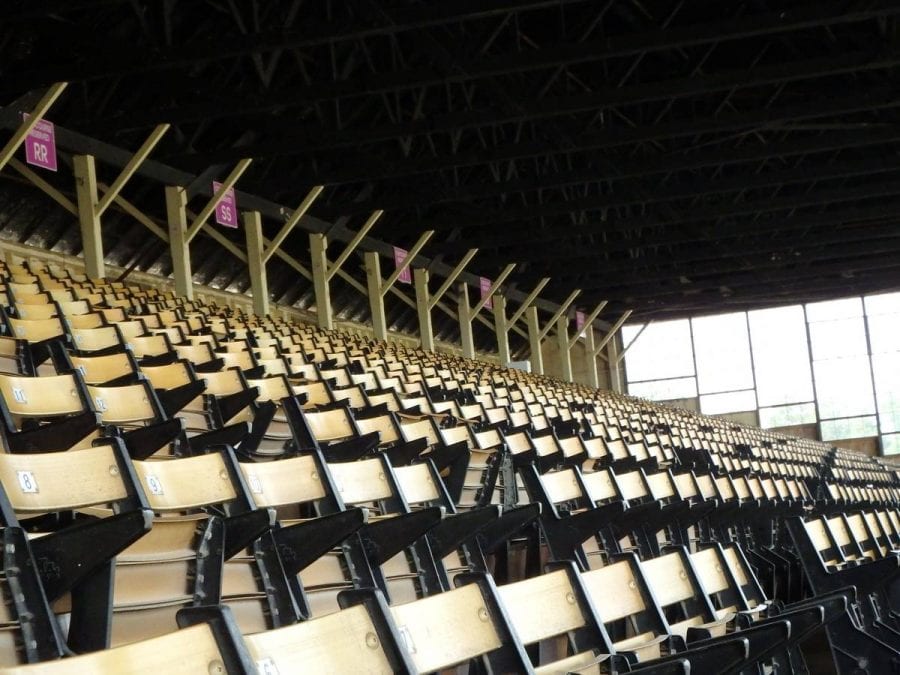
The MTHA has long tinkered with the condition book, trying to appease trainers who want a race written for a specific horse in their barn, or who want more races for Maryland-breds, or who want more claiming race, or who want fewer claiming races, or who want lower claiming prices, or who want higher claiming prices.
“Everything depends on the condition book,” said Gaudet. “And every time you tweak one thing, it messes up the entire book. There are already so many variables in racing, and the racing schedule shouldn’t be one of them. Trainers don’t want to be on the phone constantly with owners talking about the overnight and explaining why a race didn’t go.”
Longtime trainer Maryland trainer Jerry Robb believes that the current condition book is so voluminous that it would support a five-day-a-week racing program. Since Maryland races only three days per week, that leaves a lot of horses – and owners – on the sidelines.
“We’ve lost breeders. We’ve lost owners,” Robb said. “I have one owner, every time I enter a horse that doesn’t get in, he sends it to Parx.”
For MTHA co-founder and president Katy Voss, the importance of the condition book goes far beyond trainers’ ability to set a course for their horses. The book itself is an instrument of encouragement, an incentive not only for owners, but also for breeders.
A long-time Maryland breeder and former president of the Maryland Horse Breeders Association, Voss is firm in her conviction that the racing program has to support the breeding program.
“In a sense, there are two factions among the horsemen,” she said. “Claiming guys, and people who develop horses. The game has always provided advantages to the claiming guys, because track management has tended to favor trainers who have the most starts per stall, because that’s critical to help fill races.”
But, she said, with the high expense of training horses, emphasis has to be on the people who are bringing new horses into the sport.
“There are a fair number of claiming trainers who do breed and develop horses,” she acknowledged. “But it costs so much to get a horse to the races, and breeders have to have a shot to get out, to at least break even, or they’re not going to bring back another horse.”
“It’s a balancing act,” she continued. “We’ve got to keep both owners and breeders in the business.”
TK Kuegler agrees. A Maryland native and the founder and managing partner of Wasabi Ventures Stables, he’s also the president of Jim McKay Maryland Million, and he was recently appointed to the board of directors of the Maryland Jockey Club, in addition to sitting on the board of the MHBA. Not long ago, he kept his broodmares in Maryland. Now, the majority of them are at his farm in Kentucky.
“About three or four years ago, I started seeing the tea leaves,” he explained. “Breeding is a long game, and you have to make decisions years in advance of what you think the market will do. Without a clear picture of what was going to happen in Maryland, it was hard to commit financial resources.”
Bolstering the state’s breeding industry, he believes, is paramount.
“I think the most important thing we can do in Maryland is to breed more horses,” he said. “That’s going to take time, but more Maryland-breds equals better racing in Maryland. If you have a state with a strong breeding component and the infrastructure to support it, you’ll create strong racing to go along with it, and vice versa.”
And like Gaudet, he stresses the importance of a stable condition book and racing program.
“We need to create an environment in which I, as a Maryland breeder, know that my Maryland-bred can run in a certain number of races three or four years from now,” he said. “I need to know what purses will look like, and I need to know that we’ll have a facility where I might be able to run to be competitive. In that sort of situation, I know that I can invest.”
LISTEN TO THE LATEST OFF TO THE RACES RADIO!
In March, trainers, breeders, and owners Gina and Jerry Robb posted an ominous message on their Facebook page, critiquing decisions made by both the MTHA and the MHBA. Gina is a member of the latter’s board of directors.
She wrote, in part, “It’s been a hell of a month for me and after my meeting with the breeders board and my husband’s meeting with the condition book committee on the mtha… I have decided to resign from the board – and sell our mares, horses and farm. I love Maryland my husband loves maryland -I love my farm but I see the writing on the wall. Everyone continues to follow the same agenda which has brought us down a road that is destroying our breeding business and horse racing industry.”
“These organizations are kind of leaving the breeders behind,” Gina said in an interview. “It’s sad. Look at programs across other states that have beautiful programs for breeders, beautiful incentives, state-bred races, things that we don’t have here that we should have and we need.”
New to the upcoming Laurel condition book: a Maryland-restricted maiden race.
Gina Robb and her husband also disagree with the decision to run some stakes races for Maryland-breds at Colonial Downs this summer and change the conditions to include Virginia-breds. In return, Virginia is putting $750,000 into the combined stakes program, significantly bolstering available purses for those events.
“It’s another example of how we as Marylanders are being pushed to the side,” she said.
Like Kuegler, the Robbs have cut back on the number of mares that they breed in Maryland, sending most of them to Kentucky, which is where they’ll head if they stick to their decision to sell their farm after Gina’s daughter graduates from high school next year.
Brown has become so discouraged that he’s considering getting out entirely, frustrated by what he sees as a lack of attention from local industry leaders to owners and bettors and a growing gap between the top and bottom levels of the game.
“Wealthy owners now see no point in doing the work—they just buy a proven horse or join a partnership,” he said. “If the horse doesn’t fit their program, which is typically stakes horse or bust, they cull it and move on. When money is no object, they play a different game, crumbling the middle market and making only commercial horses desirable. Breeders who once survived on $20,000-$30,000 regional foals are gone. Our homebred maidens now often face $300,000 purchases that ‘didn’t fit the program.’”
Gina Robb agrees. “It breaks my heart that we can run a maiden special weight with Maryland-breds forced to run in a situation where they’re going to get beat by a $1 million Mike Repole horse. It’s not fair for breeders.”
Jerry Robb foresees the elimination of Maryland stallion programs as a result of the low financial incentives in the racing program and lack of restricted races.
On top of those issues, Robb is troubled by a proposal that’s been bandied about that would create a “Maryland certified” program, providing an incentive to house young horses in Maryland regardless of where they were bred. While those have proven popular and successful in Delaware and Virginia, neither of those states has much of a stallion business.
“That will cripple the Maryland Million,” Robb said of the popular racing program restricted to Maryland-sired horses. “There’ll be no Maryland Million after two years.”
While Kuegler is not quite so apocalyptic about the state’s stallion business, he does acknowledge that there is virtually no market for stallions standing in the state.
Exacerbating and contributing to the problems: the declining number of race days in Maryland. Maryland won’t race in July and August and will race 127 days total this year, down significantly from recent years and below the 140 number that horsemen have long held as a minimum. That’s a trend many expect to continue.
“Everybody’s been saying this for years,” said Voss. “We’ve got too much racing and too many short fields, and we’ve got short fields because the foal crop is shrinking and because it costs too much to raise a racehorse. We got killed during July and August last year running against all those other tracks. The Maryland Thoroughbred Racetrack Operating Authority told us that we had to reduce days because there wasn’t enough money to run for 157 days. So we sat down with the Virginia horsemen and it worked out really for us.”
“The Mid-Atlantic is a great place for multi-jurisdictional cooperation,” said Kuegler. “The stakes series with Virginia and Maryland is the tip of the iceberg of what could be done, and the region could be super-powerful if you get some level of cooperation.”
Ah, the C word. People in the racing industry are not always known for playing nicely with each other, perhaps understandably when things like the condition book can be seen as a zero-sum situation. If the race I need goes, yours might not. If non-claiming events are given priority, claiming trainers and owners are out of luck.
“The challenge is in trying to figure out what’s good for everybody,” said Gaudet. “I can speak to my own personal experience, what I have going on, what I’ve seen. I can’t really do that for someone else, but if an action is going to help more people than it hurts, we should do it.”
“I think that dissenters come around when they see the fruits of what cooperation can create,” said Kuegler. “But we’re never going to please everybody, and you never get anything in any part of life without giving something. We can’t have people not wanting to give anything so they protect their tiny piece of the pie.”
Voss and Gaudet emphasized the need to make decisions with data, to look at the history of individual racing conditions, and to draw on available technologies to gather that data. Gaudet also stressed the need for leaders to get input from the people that they’re representing.
“We all need to feel a part of this,” she said. “This is our livelihood.”
LATEST NEWS


